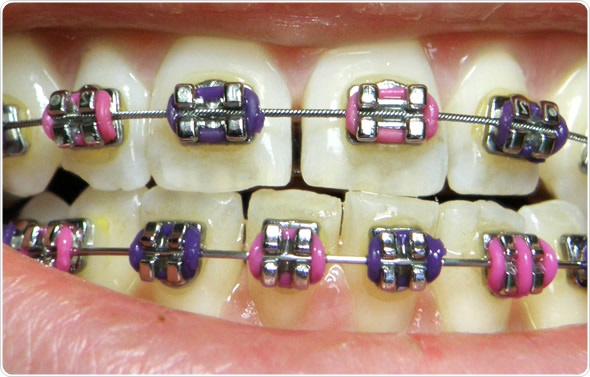Comprehensive Overview to Orthodontics Treatments for Fixing Dental Imbalances
In the realm of orthodontics, the journey to achieving a completely straightened smile includes a myriad of treatments customized to fix oral misalignments. From traditional braces to invisible aligners and even medical alternatives, the area of orthodontics supplies a variety of solutions to attend to varying degrees of dental irregularities. Understanding the details of each treatment, including their devices, benefits, and potential downsides, is vital in making notified decisions concerning one's orthodontic treatment. As we navigate through the extensive overview to orthodontic treatments for remedying oral misalignments, the detailed information of each method will unravel, clarifying the course towards a practical and unified oral positioning.
Orthodontic Procedures Review

Normal modifications and surveillance are crucial parts of orthodontic treatment to ensure progress is on track and to make any needed alterations along the means. By undertaking orthodontic treatments, people can not just attain a straighter smile but also improve their overall oral health and function.
Conventional Braces: Exactly How They Work
When taking into consideration orthodontic treatments for dental imbalances, traditional braces stand out as a reliable method for remedying teeth placing. Traditional braces are composed of braces, wires, and bands that function together to apply constant stress on the teeth, progressively moving them right into the desired positioning.
One trick aspect of how standard dental braces job is the process of bone remodeling. As pressure is applied to the teeth with the braces, the bone bordering the teeth is improved to support the new tooth positions. This makeover is important for the long-lasting stability of the remedied positioning. Patients will need regular adjustments at the orthodontist's office to ensure the braces remain to use the proper stress for reliable teeth activity.
Unseen Aligners: Benefits And Drawbacks
Unnoticeable aligners provide a convenient and discreet choice to typical braces for remedying dental imbalances. These clear, customized trays are essentially undetectable when worn, making them an enticing alternative for people seeking a more cosmetically pleasing orthodontic therapy. One of the key advantages of invisible aligners is their removability, permitting for much easier maintenance of dental hygiene compared to typical dental braces. Clients can remove the aligners prior to eating or cleaning their teeth, decreasing the risk of food getting stuck in the appliance and streamlining the cleaning process.

Surgical Orthodontic Options
Surgical treatments in orthodontics existing feasible choices for attending to complicated dental misalignments that may not be efficiently dealt with through traditional orthodontic treatments. While invisible aligners and typical dental braces can remedy numerous orthodontic problems, certain cases call for medical intervention to accomplish ideal results. Surgical orthodontic alternatives are usually recommended for extreme malocclusions, substantial jaw inconsistencies, and cases where the underlying bone framework needs click for source adjustment to achieve correct placement.
One typical medical orthodontic procedure is orthognathic surgery, which entails repositioning the jaws to deal with functional issues such as problem speaking or eating. This surgery is usually done in partnership with an orthodontist that assists straighten the teeth before and after the treatment. Surgical orthodontics may additionally involve treatments to expose influenced teeth, remove excess periodontal tissue, or reshape the jawbone to develop a much more unified facial profile.
Prior to considering surgical orthodontic choices, patients undergo a detailed evaluation to figure out click to read the requirement and prospective benefits of such interventions. aligners. While surgical treatment may appear challenging, it can significantly improve both the feature and aesthetic appeals of the smile in situations where standard orthodontic treatments fall short
Retainers and Post-Treatment Treatment

Failing to comply with post-treatment treatment directions can result in regression, where the teeth slowly relocate back in the direction of their initial positions. Consistent retainer wear, good oral hygiene, and normal dental check-ups are essential for maintaining the outcomes attained via orthodontic surgical treatment and ensuring the long-term stability of the remedied oral alignment.
Conclusion
Finally, orthodontic procedures use different options for remedying dental imbalances. Standard dental braces utilize metal braces and cables to move teeth into appropriate positioning. Undetectable aligners offer an even more very discreet alternative yet might not appropriate for all situations. Surgical orthodontic choices are offered for extra serious dental discount plans misalignments. Retainers are frequently used post-treatment to preserve the brand-new placement. On the whole, orthodontic treatments can effectively enhance dental health and wellness and visual appearance.
As we navigate via the comprehensive guide to orthodontic treatments for remedying dental misalignments, the complex information of each technique will certainly unfold, shedding light on the path towards a harmonious and functional dental alignment. - cumming orthodontics
One of the most typical orthodontic therapies is the usage of braces, which are composed of metal brackets and wires that use mild stress to gradually change teeth into the wanted position.When taking into consideration orthodontic therapies for dental imbalances, traditional dental braces stand out as a reliable method for dealing with teeth placing. Furthermore, invisible aligners may not be suitable for complicated orthodontic issues that need more significant teeth activity, as they are usually recommended for moderate to moderate instances. Retainers are customized orthodontic tools made to hold teeth in their dealt with positions after the conclusion of orthodontic treatment.